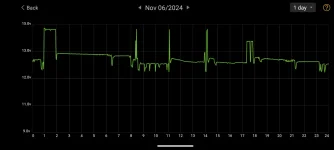Looney100
Registered Member
- Joined
- Feb 22, 2022
- Messages
- 2,577
- Reaction score
- 1,907
- Points
- 113
- Location
- Canada
- Genesis Model Year
- 2023
I don't think the standard 12v batteries are designed to deal with the demand characteristics of an EV vs an ICE vehicle where they are mostly helping turn over the engine.
I theory, operating an EV should be the job that every 12V dreams of, there is little work to be done. I used my booster pack to start the GV60 twice, and it still read 100%.
I think you’ve hit the nail on the head. The problem is in the 12V battery management.It's design flaw, that the 12V battery does not charge sufficiently when parked. The real solution is to always carry the physical key with you (the actual key, not the fob. I'm not sure why Genesis opted for a separate key instead of the industry standard which has a physical key inside the fob), and have a 12V battery jump starter in the frunk. You need the physical key to unlock the car so you can open the frunk, where the 12V battery is located.
You’ve also described my process to a T. Battery was dead, I popped the physical key out to open the door, then popped the frunk open, where my booster pack is. Connected it to the 12V battery and started the car.
I also agree that the completely separate physical key is a silly design choice - particularly, given the size of the fob.










